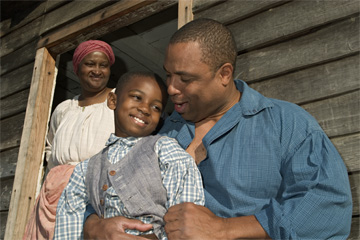Matthew Ashby 1727 — 1771

Matthew Ashby was a free black man who freed his family from slavery during a time when opportunities to manumit slaves were extremely limited. He was born in 1727 of mixed racial heritage. His father was of African descent and his mother was a white indentured servant. Since 1662, Virginia law established that the condition of the mother determined her child’s status as free or enslaved. Biracial children, born of white women and black men, were required to be indentured to another family as an apprentice for thirty-one years. Thus, at the age of thirty-one, Matthew gained his freedom.
Matthew Ashby married Ann, an enslaved woman owned by bricklayer Samuel Spurr. Together they had three children. Marriage was prohibited for slaves because they were legally considered property. To obtain a legal marriage, Matthew had to accomplish two important tasks: he had to purchase Anne and their children and then petition the authorities for their freedom. Working as a carter, and performing odd jobs around Williamsburg, Matthew Ashby earned enough money to purchase his wife and children from Samuel Spurr for £150. Without legal manumission, his wife and children would remain Ashby’s personal property. His next step was to petition the Governor’s Council to manumit his wife and children. Since 1723, Virginia laws prohibited slave owners from freeing their slaves without the Council’s approval. Perhaps Matthew’s odd jobs may have allowed him to network with people that could help him free his family. Matthew submitted the petition and on November 27, 1769, the Governor’s Council granted Ann and the children their freedom.
Ashby had to establish relationships in the black and white community to survive as a free person. Education was important in the free black community generally, and books in the Ashby property inventory suggest that education was important in their family, too. Before Matthew completed his apprenticeship, his children John and Mary, attended the Bray School at the College of William and Mary in Williamsburg. Financed by an English philanthropist, Dr. Thomas Bray, the curriculum emphasized catechism, speaking, cleanliness, and obedience, as well as reading and writing. The girls were also taught knitting and sewing. From 1760 to 1774, the schoolmistress, Ann Wager, taught John and Mary.
Matthew Ashby may have been part of a secret network of free blacks that provided refuge for runaway slaves in Williamsburg. According to a Virginia Gazette article in 1770, Matthew Mayes accused Matthew Ashby of helping to harbor a runaway in his home. Ashby was willing to jeopardize his own status as a free man to assist others.
Fortunately for Anne and the children, Matthew was able to secure their freedom before he became ill and died two years later in 1771. He left a moderate estate for his family, which included fashionable luxury items such as a silver watch and a tea board. The number of items in his will related to laundering suggests that Ann was a laundress. Shortly after Matthew’s death, Ann married George Jones, but that marriage was unhappy and did not last long.
Matthew Ashby and his family were part of a vibrant free black community in Williamsburg. His jobs may have allowed him to gain connections with important people in the white and black community before the American Revolution. Descendants of the Ashby family continue to live and work in Williamsburg today.







